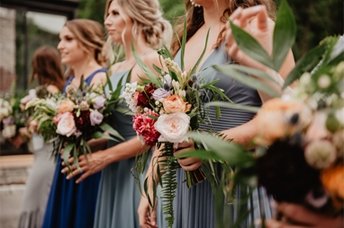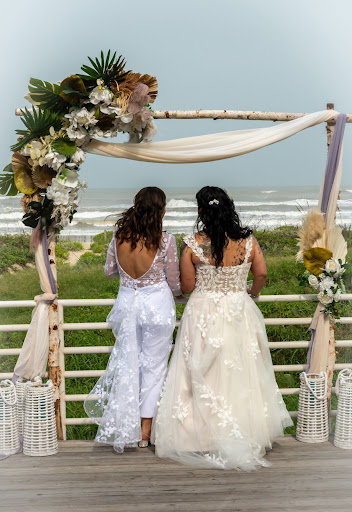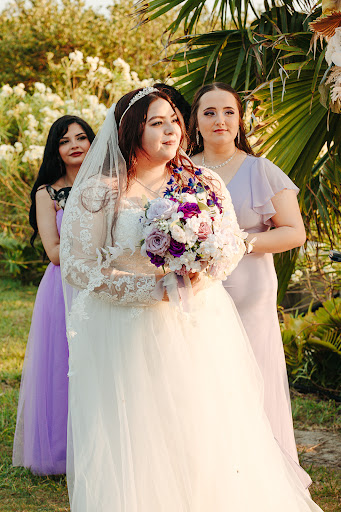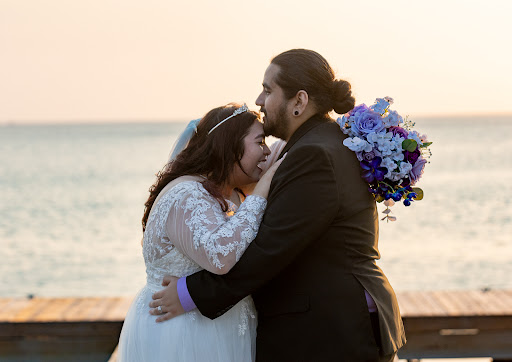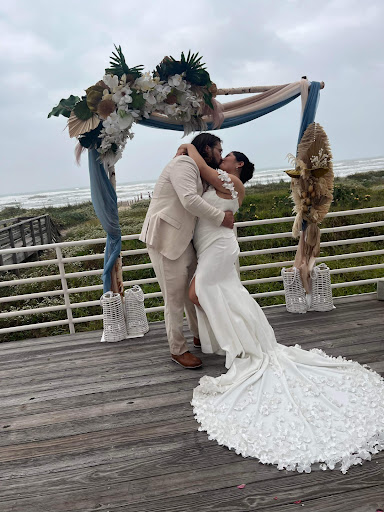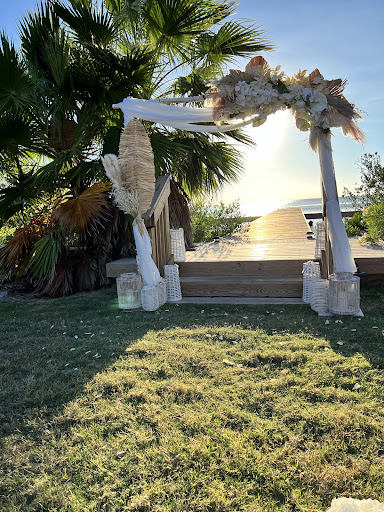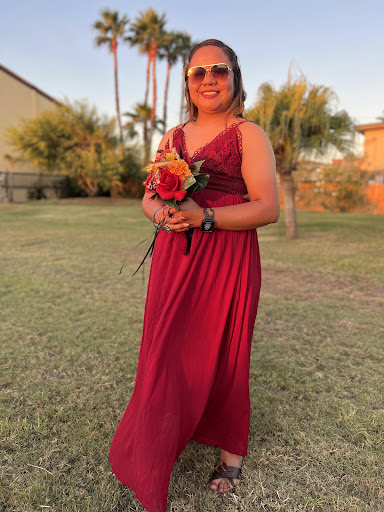Expert Wedding Planning Tips
By Weddings By Wendi – Your San Marcos, Texas wedding planning partner
Expert Wedding Planning Tips: Your Complete Guide to Stress-Free Wedding Success
Planning a wedding means balancing vision, logistics, and emotions to create a day that feels effortless and meaningful. This guide delivers expert wedding planning tips that reduce stress, keep you on schedule, and help you spend your budget where it matters most, combining practical how-tos with local insight for Austin and the Texas Hill Country. You’ll learn a step-by-step checklist from engagement to post-wedding tasks, a clear budget framework tailored to Central Texas realities, how day-of coordination protects your time and energy, and methods for choosing trusted vendors and venues. Each section uses semantic relations—definitions, mechanisms, and benefits—to explain why choices work and how to implement them, and each paragraph builds into the next so you can follow a logical planning flow. Read on for checklists, tables, vendor questions, venue evaluation tips, trend ideas for 2025–2026, and timeline templates that together form a practical plan to keep planning calm and on track.
What Is the Essential Wedding Planning Checklist for a Perfect Day?
An essential wedding planning checklist is a prioritized sequence of decisions and tasks that transform an idea into an executable event by mapping milestones, responsibilities, and final-day details. The mechanism is simple: sequence key decisions (vision → guest list → venue → vendors → timeline) so dependencies are clear and vendor windows are met; the benefit is predictable progress, fewer last-minute crises, and a cohesive guest experience. Start by framing your priorities and non-negotiables, then break work into monthly milestones and daily day-of tasks. Below we unpack starting steps, major planning milestones, guest-list strategies, and the must-have day-of items so you can implement the checklist without missing critical elements and so your attention flows naturally into budgeting and vendor selection.
How Do You Start Planning Your Wedding?
Starting planning begins with defining a clear wedding vision, deciding on a guest count, and setting a working budget; these three anchor all next decisions. A vision gives design direction, guest count narrows venue options, and a preliminary budget determines realistic vendor tiers. Assemble a planning folder or app and create simple spreadsheets for vendor contacts, contracts, and payments so you have a single source of truth. Set short-term goals for the first 30–90 days (book venue and photographer, confirm date) which creates momentum and clarifies vendor availability. With early organization in place, you can transition to mapping timeline milestones and firming up vendor contracts.
What Are the Key Milestones in a Wedding Planning Timeline?
Key milestones are anchoring events on your timeline—engagement, venue booking, vendor hires, invitations, fittings, and final confirmations—that create a rhythm for planning and budget allocation. Booking the venue first usually sets the date and shapes vendor scheduling; photographers and caterers are next because their availability is often constrained. Major milestones include venue booking (9–18 months ideal for peak dates), vendor confirmations (6–12 months), invitation sends (8–12 weeks), and final walkthroughs (1–2 weeks). Breaking milestones into months prevents rushed, last-minute decisions and leads naturally to guest list management and day-of preparations.
How Can You Organize Your Guest List Effectively?
Organizing a guest list efficiently requires tiered prioritization, clear tracking fields, and consistent communication to manage expectations and logistics. Create tiers (A/B/C) to prioritize invites for limited-capacity venues, and include spreadsheet fields for RSVP status, meal choice, relationship, travel needs, and plus-one permissions. Use RSVP deadlines and automated reminders to limit late responses and maintain accurate headcounts for catering and seating. Effective guest-list management reduces surprise costs and helps you choose a venue that fits your key invitees, which in turn impacts your budget and vendor needs.
What Are the Must-Have Items on a Day-Of Coordination Checklist?
A day-of coordination checklist is a compact operational plan that ensures the timeline runs, vendors are aligned, and emergencies are resolved quickly to protect the couple’s experience. Include a vendor contact sheet with arrival windows, a detailed minute-by-minute timeline, a rentals and signage checklist, ceremony cues, and an emergency kit with stain remover, sewing kit, and basic medical items. Assign a single point of contact for vendors to minimize confusion and confirm final payments and gratuities before the event begins. Having these items ready enables the couple to stay present and transitions smoothly into the role a day-of coordinator plays.
Weddings By Wendi uses a proprietary day-of checklist that consolidates vendor contacts, timeline enforcement duties, and an event-day emergency kit into one manageable packet; couples seeking a stress-free execution often contact Wendi to schedule a coordination consultation and learn how a planner can own these details on the wedding day. This integration focuses on practical execution while you retain control of creative choices and guest experience.
How Do You Master Your Wedding Budget: A Detailed Breakdown and Saving Tips?
Mastering a wedding budget means allocating funds with priorities in mind, tracking spend against a clear template, and using local-saving strategies to preserve quality while reducing costs. The mechanism is allocation—assign percentages to categories that reflect what matters most to you—and the benefit is clarity on trade-offs (for example, more for photography vs. less for decor). Below is a Central Texas-aware budget table, saving tactics, and discussion of how budget decisions shape venue and vendor selection so you can make intentional choices that maximize experience and value.
Different couples distribute their budget differently, but a regional lens helps: venue and catering typically dominate costs in Central Texas, while photography and rentals provide lasting memories and guest comfort. Use the table below to scan typical allocations and money-saving strategies that fit local realities.
This allocation table shows where Central Texas weddings often spend and how reallocation can preserve high-impact elements. Next we’ll explore average costs and practical saving tips to apply these percentages.
What Is the Average Cost of a Wedding in Central Texas?
Average Central Texas wedding costs vary by guest count and venue tier; micro-weddings start at significantly lower ranges, while large estate affairs push totals higher primarily because of catering and venue fees. Cost drivers include location, guest count, and service levels—venues that include catering and rentals change the allocation dynamic. Recent local market trends show couples getting more value by targeting weekday or off-season dates and by leveraging local vendors who reduce travel and setup fees. Understanding average ranges helps you set a realistic budget and prioritize which categories deserve a larger share.
How Should You Allocate Your Wedding Budget by Category?
Allocate your budget based on what creates the experience you prioritize: venue and food for guest experience, photography for lasting memories, and decor for atmosphere and brand. Start with a baseline percentage, then reallocate to reflect priorities—if photography is critical, shift 3–5% from decor to photography; if food is the priority, accept a lower decor spend. Negotiate vendor bundles and ask about customization to avoid paying for services you don’t need. Clear allocation reduces decision fatigue and leads into specific money-saving tactics.
What Are Proven Tips to Save Money Without Sacrificing Quality?
Saving money without lowering quality relies on strategic trade-offs, vendor negotiation, and local sourcing, which keep the guest experience intact while lowering cost. Consider off-peak dates, select in-season and locally grown florals, repurpose ceremony arrangements for the reception, and bundle services with vendors for packaged pricing. Using local vendors and vendor relationships created by planners can often secure better rates and reliable service. These tactics deliver savings while maintaining the elements that matter most, and they naturally inform how you evaluate vendors and venues.
How Does Budget Impact Venue and Vendor Selection?
Budget frames the practical set of venues and vendors available and dictates whether you pursue package pricing or à la carte options. A higher venue budget opens estate venues and full-service locations; a tighter budget favors micro or off-peak options and venues that allow outside caterers. When budget concentrates on high-impact vendors like photography and food, you accept savings in decor or extras. This trade-off logic helps prioritize vendor contracts and schedule negotiations that match your value goals.
What Is the Role of a Day-Of Wedding Coordinator and Why Do You Need One?
A day-of wedding coordinator is a professional who executes the agreed plan on the wedding day, managing timelines, vendors, and on-site issues so the couple can be present. The mechanism is operational oversight—coordinate arrivals, run the timeline, and solve problems—producing the benefit of emotional relief for the couple and consistent guest experience. Below we define duties, explain how coordination reduces stress, advise when to book, and compare day-of coordination to full-service planning so you can decide which support level fits your needs and timing.
What Duties Does a Day-Of Coordinator Handle on Your Wedding Day?
A day-of coordinator manages vendor check-ins, enforces the timeline, oversees setup and teardown, and resolves unexpected issues quickly to keep the event on schedule. Typical duties include confirming vendor arrival times, coordinating cues for ceremony and reception, handling vendor payments or logistics, and troubleshooting emergencies like equipment failures or timeline slips. A coordinator acts as the single point of contact so family and vendors don’t bother the couple, preserving calm and presence. A quick scenario: if a vendor is delayed, the coordinator reorders setup tasks and keeps the timeline moving, preventing ripple effects—this demonstrates clear operational value.
How Does Day-Of Coordination Reduce Stress for Couples?
Day-of coordination centralizes responsibilities and replaces decision fatigue with a single professional who anticipates and resolves problems, which allows couples to enjoy the event without distraction. By taking ownership of timing, vendor liaison, and contingency plans, a coordinator prevents family friction and minimizes last-minute firefighting. Knowing someone enforces the schedule and has backup plans reduces anxiety and preserves memories. This benefit naturally leads into recommendations for when to secure coordination support.
When Should You Book a Day-Of Coordinator?
Book a day-of coordinator ideally 1–3 months before the wedding for straightforward events, and earlier for complex or destination celebrations where vendor alignment and logistics require more lead time. Earlier booking is advantageous when you need help finalizing logistics, vendor confirmations, or venue walkthroughs; it also secures availability for peak dates. If your event involves remote guests, multi-venue setups, or elaborate decor, consider a coordinator earlier to mitigate scheduling risk. Timing your hire correctly ensures the coordinator can integrate fully with vendors and the venue.
How Does Day-Of Coordination Differ from Full-Service Planning?
Day-of coordination focuses on executing an already-made plan during the event window, whereas full-service planning covers vision development, vendor sourcing, contract negotiation, and long-term project management across the planning lifecycle. The comparison centers on scope—full-service planners are engaged early and steer the entire planning process; day-of coordinators concentrate on the final phase and execution. Choose day-of coordination if you’ve managed planning but want professional execution; choose full-service if you need end-to-end guidance. For couples seeking execution certainty, a short consultation with an experienced planner clarifies which service best fits your needs.
Weddings By Wendi offers day-of coordination and full-service options and can schedule an initial consultation to explain how coordination duties and timing match your event complexity; couples often use this to decide whether to hire a coordinator for execution or a planner for broader project management.
How Do You Choose Your Wedding Vendors: Expert Tips for Selecting the Best Team?
Choosing vendors requires evaluating fit, experience, deliverables, and contract clarity so that the team executes your vision cost-effectively. The mechanism is vetting through targeted questions and portfolio review; the benefit is higher reliability and better value for money. Below are practical questions to ask, sourcing strategies for Austin and Texas Hill Country, the value of professional photographers, and a vendor comparison table to help you shortlist confidently and reduce procurement risk.
When evaluating vendors, probe deliverables and contingency plans and verify portfolio work that matches your venue type and lighting conditions to ensure compatibility.
What Questions Should You Ask Potential Wedding Vendors?
Ask vendors about their experience with similar venues, their specific deliverables and timelines, cancellation and contingency policies, and backup plans for emergencies to ensure clarity and risk management. Specific questions include: Can you provide a sample timeline for our schedule? What happens if a vendor cancels? Are travel and setup fees included? What is the payment schedule and refund policy? Clear answers prevent surprises and form the basis for contract terms. These inquiries prepare you for local sourcing and vendor comparisons.
How Do You Find Trusted Local Vendors in Austin and Texas Hill Country?
Find trusted local vendors through venue-recommended lists, planner referrals, recent local portfolios, and community reviews, then validate with direct interviews and site visits. Venues often provide preferred vendor lists that reflect local familiarity with site logistics and restrictions; planners bring vetted relationships and negotiation leverage. Review recent work photos shot at your prospective venue or similar lighting to confirm suitability. Using these sources reduces risk and increases the chance of coordinated vendor teams, leading to better execution on the wedding day.
This table helps you compare vendors beyond price and prioritize what matters in each contract. Next we emphasize photography benefits as a critical investment.
What Are the Benefits of Hiring a Professional Wedding Photographer?
Professional photographers capture decisive moments with technical skill, consistent lighting control, and post-production editing that preserves memories beyond the event day. They bring experience with timelines and know how to stage family portraits, manage group shots, and adapt to venue lighting, producing a reliable delivery of images you’ll revisit for years. Different photography styles—documentary, editorial, or fine art—affect mood and deliverable choices, so review portfolios for emotional tone and composition. Investing in a professional photographer usually yields the strongest long-term ROI for wedding memories.
How Can You Compare Vendor Packages and Pricing Effectively?
Compare vendors by deliverables, experience, references, and contract terms rather than headline price to understand true value and potential hidden costs. Create a comparison matrix that lists hours, travel fees, number of staff, deliverables, and cancellation policy so you can match offers apples-to-apples. Ask for sample contracts to identify exclusions and overtime rates, and request references for similar events. This framework helps you select vendors who meet both aesthetic goals and logistical needs.
Where Are the Best Wedding Venues in Austin and Texas Hill Country?
Choosing the right venue depends on style, capacity, logistics, and how the space supports your wedding flow; local expertise matters because venue features drive vendor needs and guest experience. The mechanism is an on-site evaluation that checks capacity, access, amenities, and contingency plans; the benefit is a venue that reduces vendor friction and aligns with your aesthetic. Below are venue spotlights, selection guidance, destination-wedding advantages, and a venue-visit checklist to make venue decisions practical and confidence-building.
What Makes Vista West Ranch and Villa Picasso Popular Wedding Venues?
Vista West Ranch and Villa Picasso are popular for their distinctive settings—ranch landscapes and classic architecture respectively—that offer scenic backdrops and adaptable spaces for ceremonies and receptions. Key features to evaluate include capacity, included amenities (dressing areas, parking, vendor access), noise and curfew restrictions, and ceremony staging options. Ask about preferred vendors, sample floor plans, and how the venue handles weather contingencies. Understanding these venue traits helps you match the location to your guest experience goals.
How Do You Choose a Venue That Fits Your Wedding Style and Budget?
Choose a venue by aligning guest count, style, and budget: rustic venues suit casual, experiential events while estates and ballrooms support formal receptions. Evaluate costs not only for rental but for required vendor packages or minimums; venues that include catering or rentals can be cost-effective if they fit your style. Consider logistics—parking, guest flow, and vendor access—as hidden costs that affect guest experience and vendor pricing. A clear venue decision framework reduces surprises and helps set realistic expectations for the rest of the planning process.
What Are the Advantages of Planning a Destination Wedding in Texas?
A Texas destination wedding offers varied landscapes—hill country vistas, coastal scenes, and ranch settings—paired with local vendor pools that understand travel logistics and guest needs. The advantage is local variety without international travel, reducing guest complexity while delivering distinctive locations. Plan for guest travel windows, block hotel rates, and integrate local hospitality into the schedule. These destination elements naturally influence your timeline planning and vendor coordination choices.
How Can You Visit and Evaluate Venues Before Booking?
When visiting venues, use a structured walkthrough checklist: inspect ceremony and reception sightlines, vendor access points, restroom count, parking, and on-site power; confirm what is included and what incurs extra fees. Ask about sample layouts, load-in/load-out windows, and noise/curfew policies. Take photos and notes to compare sites later and bring a vendor or planner if you need technical input on staging and logistics. A disciplined visit process prevents oversight and leads to confident booking decisions.
Weddings By Wendi has experience coordinating walkthroughs and evaluating venues like Vista West Ranch and Villa Picasso as part of venue selection consultations; couples sometimes request an arranged walkthrough to ensure the venue meets service and timeline needs.
What Are the Latest Wedding Trends for 2025-2026 to Inspire Your Celebration?
2025–2026 wedding trends emphasize sustainability, personalization, experiential entertainment, and video-first storytelling—choices that shape vendor selection and guest experience. The mechanism is creative application: local sourcing reduces carbon footprint while personalized elements enhance emotional resonance; the benefit is contemporary, memorable celebrations that reflect values. Below we outline sustainable practices, color and theme trends, experiential entertainment ideas, and why video-first inspiration matters so you can adapt trends to budget and venue constraints.
How Are Couples Incorporating Sustainability and Local Elements?
Couples incorporate sustainability by selecting locally sourced florals and food, repurposing ceremony arrangements for reception tables, and donating leftovers or composting food waste. Ask vendors about sourcing, seasonal availability, and options for reusable or rental decor to reduce single-use items. Using local vendors cuts travel emissions and often lowers costs while adding authentic regional character. These strategies align sustainability goals with aesthetic and budget priorities and segue into color and design trends.
What Are Popular Color Palettes and Design Themes This Year?
Trending color palettes combine vibrant accents with earthy neutrals—think warm terracotta paired with sage and cream—while nostalgic or vintage themes re-emerge in textured linens and heirloom-inspired decor. Choose palettes that complement your venue and season to reduce the need for extensive floral work, and use key accent pieces to carry visual cohesion. Cohesive palettes make vendor selection and procurement simpler and help the timeline for setup and decor installation.
How Are Experiential Elements Enhancing Guest Entertainment?
Experiential elements—interactive stations, choreographed moments, and immersive performances—create memorable guest engagement without necessarily increasing headcount costs. Ideas include tasting stations, live artists, or curated surprise elements that fit the venue footprint and staffing. Plan logistics and staffing in advance to avoid bottlenecks and ensure a seamless guest flow. These elements should be balanced with timeline constraints and vendor capacity for smooth execution.
Why Is Video-First Inspiration Important for Modern Wedding Planning?
Video-first inspiration—short reels and clips—communicates the feel of vendor work and venue flow more effectively than still images, helping you and your vendors align on pacing, lighting, and storytelling. Short-form video shows ceremony timing, DJ pacing, and lighting transitions, providing an operational blueprint for vendors. Ask vendors for short-form examples of past events at similar venues to set expectations. Using video early reduces misalignment and improves vendor selection and timeline planning.
How Can You Create a Wedding Planning Timeline That Keeps You on Track?
A wedding planning timeline converts milestones into scheduled tasks, assigns responsibilities, and identifies booking lead times so progression is measurable and manageable. The mechanism is phased execution (vision → booking → planning → finalization) with clear ownership for each task; the benefit is steady progress and fewer surprises. Below we lay out phases, booking windows, timeline adjustments for micro or destination events, and practical tools and templates you can adopt to maintain momentum and vendor alignment.
What Are the Key Phases of a Wedding Planning Timeline?
Key phases include vision & prep, vendor booking, planning execution, and final month/week-of tasks—each phase contains specific deliverables and deadlines. Vision & prep defines priorities and guest count; vendor booking secures venue and core vendors; planning execution finalizes details, and finalization manages confirmations, seating, and timelines. Assign responsibilities for each task to a partner, family member, or planner to ensure accountability. Clear phase definitions reduce overlap and prepare you for detailed booking windows.
How Far in Advance Should You Book Vendors and Venues?
Book venues 9–18 months ahead for peak dates and popular venues, while photographers, caterers, and entertainment typically require booking 6–12 months out for best availability. Smaller vendors or micro-wedding services can sometimes be confirmed closer in, but travel-dependent or specialty vendors need longer lead times. Prioritize venue first, then photographers and caterers, and follow with florists and stylist services. Early booking preserves choice and stability for your timeline.
How Do You Adjust Your Timeline for Micro Weddings or Destination Events?
Condense timelines for micro weddings by focusing on essential vendors and reducing buffer deadlines—micro events can often secure key vendors 3–6 months out—while destination events require extra lead time for travel coordination and guest logistics. Identify which tasks compress (invitations, RSVPs) and which need full lead time (travel blocks, vendor permits). Distinguish which elements are flexible and which are not to maintain quality under a compressed schedule. These adjustments inform which tools and templates will be most useful.
What Tools and Templates Can Help You Manage Your Wedding Schedule?
Use spreadsheets, timeline templates, and apps for RSVPs and seating to centralize assignments and deadlines; choose tools that integrate vendor contact tracking and payment schedules for transparency. Recommended workflows include a master budget spreadsheet, a shared timeline document with vendor windows, and RSVP management tools for guest tracking. Planners often consolidate these tools into one shared dashboard for vendor coordination. Selecting the right tools makes ongoing management easier and improves vendor communication as you approach the wedding day.
Frequently Asked Questions
What Should You Consider When Choosing a Wedding Date?
Choosing a wedding date involves several factors, including venue availability, seasonal weather, and guest convenience. Popular dates, such as weekends in spring and fall, may require booking well in advance. Consider any significant holidays or local events that could affect guest attendance or vendor availability. Additionally, think about your personal schedule and any family commitments. If you have a specific venue in mind, check their calendar first, as some locations may have limited availability during peak seasons.
How Can You Personalize Your Wedding Ceremony?
Personalizing your wedding ceremony can make it more meaningful and reflective of your relationship. Consider incorporating unique rituals, such as a unity ceremony, personalized vows, or readings that resonate with you both. You can also include family traditions or cultural elements that honor your backgrounds. Collaborating with your officiant to craft a ceremony script that tells your love story can enhance the experience. Ultimately, the goal is to create a ceremony that feels authentic and special to you and your guests.
What Are the Benefits of Hiring a Wedding Planner?
Hiring a wedding planner can significantly reduce stress and streamline the planning process. Planners bring expertise in vendor selection, budget management, and timeline creation, ensuring that all details are covered. They can also provide valuable insights into local trends and resources, helping you make informed decisions. Additionally, a planner acts as a liaison between you and your vendors, allowing you to focus on enjoying the planning journey. On the wedding day, they manage logistics, allowing you to be fully present and enjoy your celebration.
How Can You Ensure Your Wedding Is Accessible for All Guests?
Ensuring accessibility for all guests involves thoughtful planning and consideration of various needs. Start by choosing a venue that complies with ADA standards, including ramps, accessible restrooms, and seating arrangements. Communicate with guests ahead of time to understand any specific requirements they may have. Consider providing transportation options for those who may have difficulty getting to the venue. Additionally, think about dietary restrictions when planning your menu and ensure that all guests feel included in the celebration.
What Should You Include in Your Wedding Day Emergency Kit?
A wedding day emergency kit is essential for handling unexpected situations. Include items such as a sewing kit for wardrobe malfunctions, stain remover for spills, pain relievers for headaches, and safety pins for quick fixes. Don’t forget personal items like makeup for touch-ups, hair ties, and breath mints. Having a small first-aid kit can also be helpful for minor injuries. Designate a trusted friend or family member to keep the kit on hand, ensuring you can address any issues that arise without stress.
How Do You Handle Last-Minute Changes on the Wedding Day?
Handling last-minute changes on your wedding day requires flexibility and a calm mindset. Designate a point person, such as your day-of coordinator, to manage any unexpected issues. Communicate your priorities and preferences to this person in advance so they can make decisions on your behalf. Stay focused on the joy of the day rather than the details. Remember that not everything will go perfectly, and embracing the unexpected can lead to memorable moments that you and your guests will cherish.


